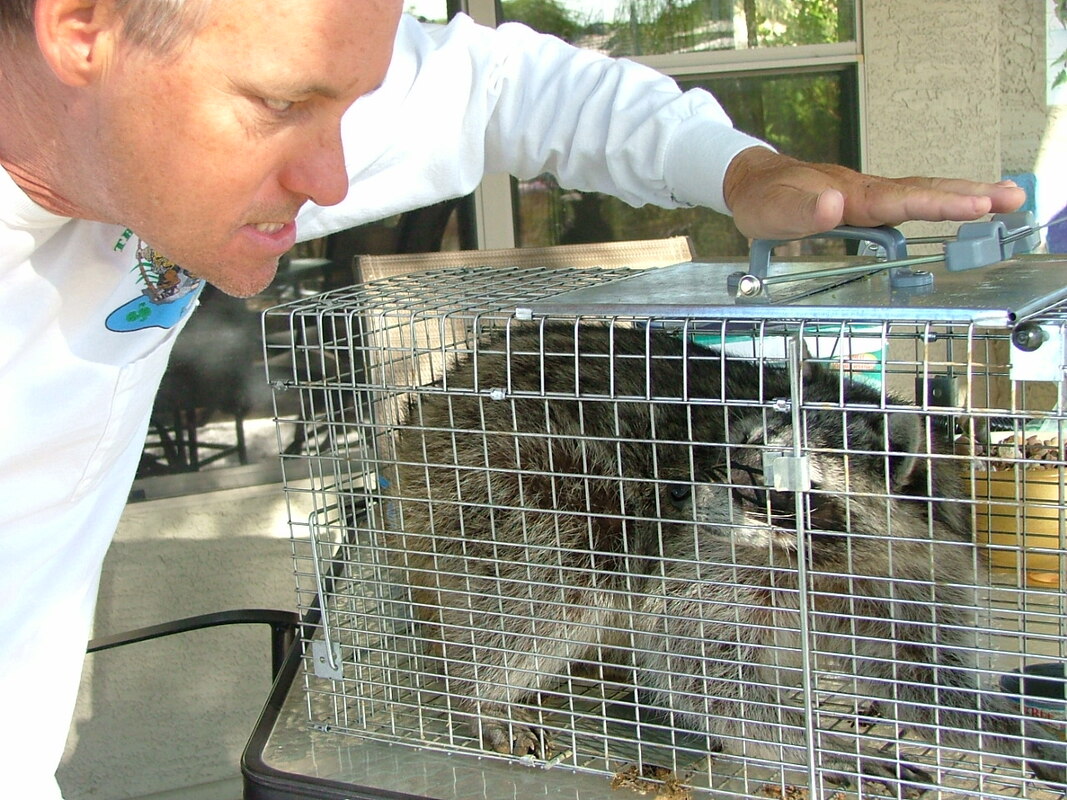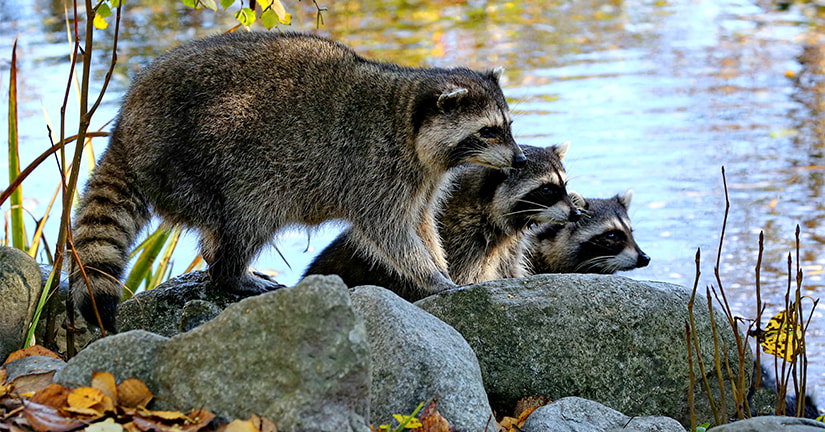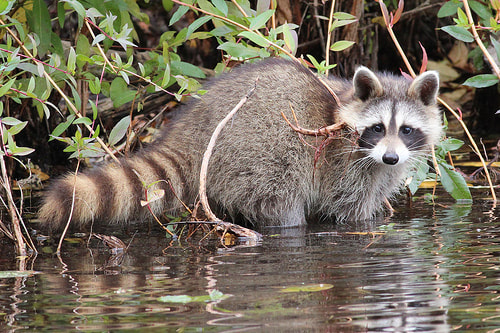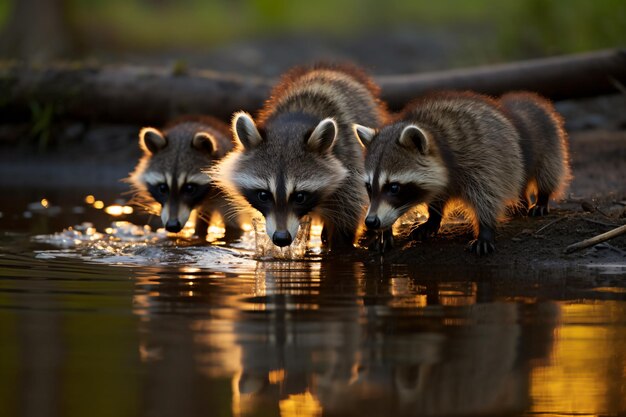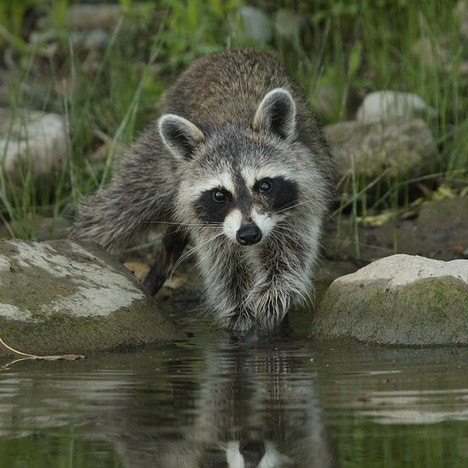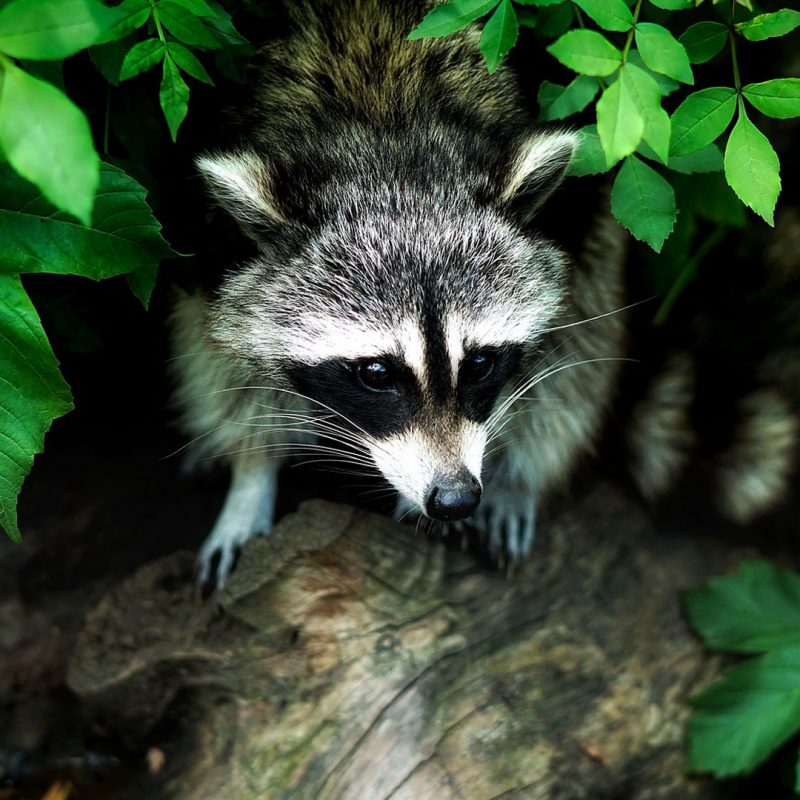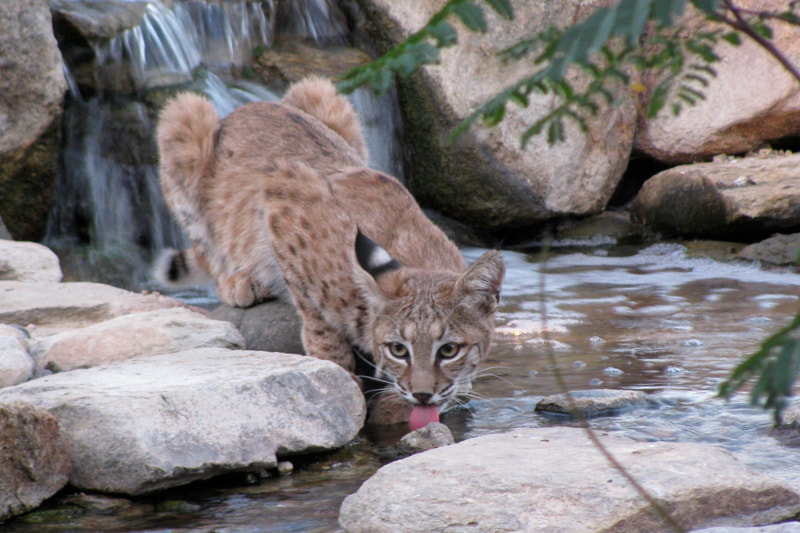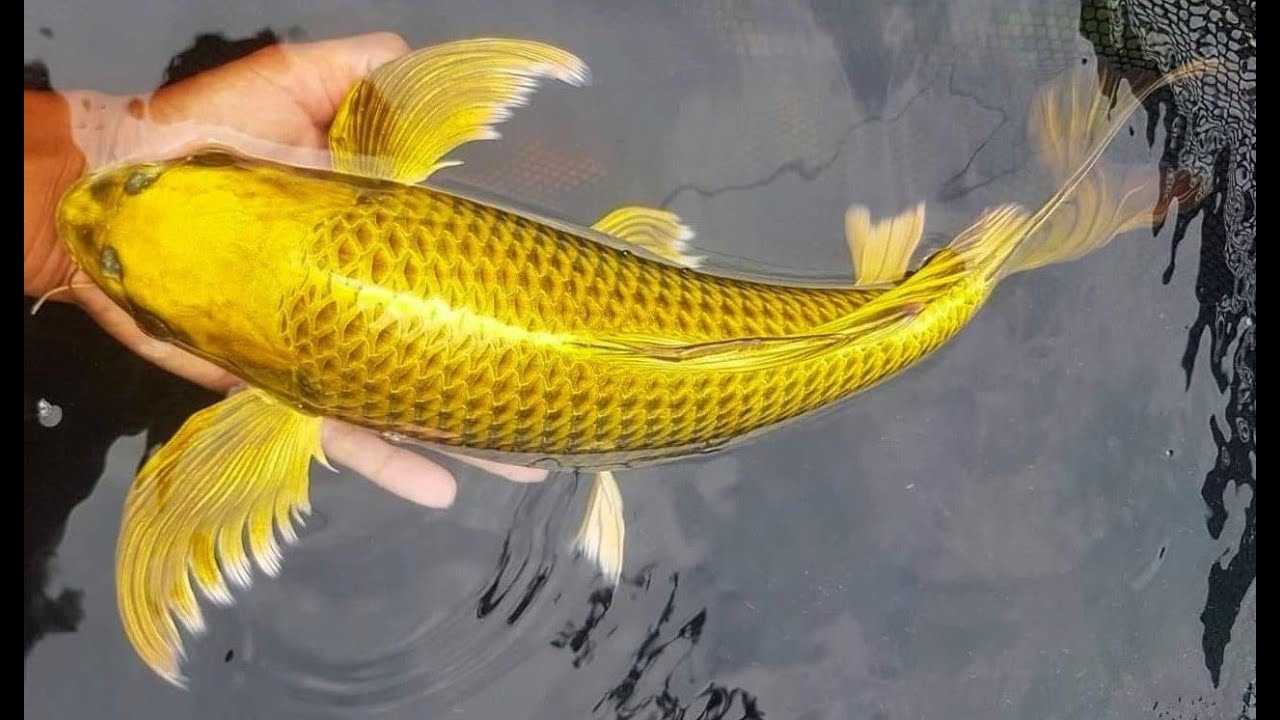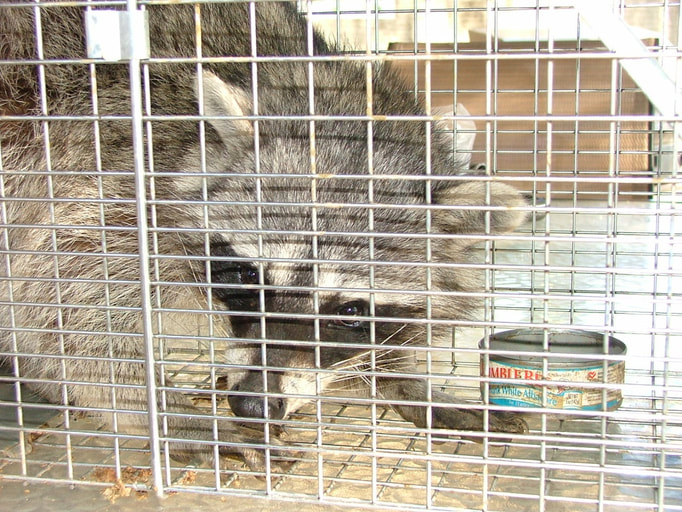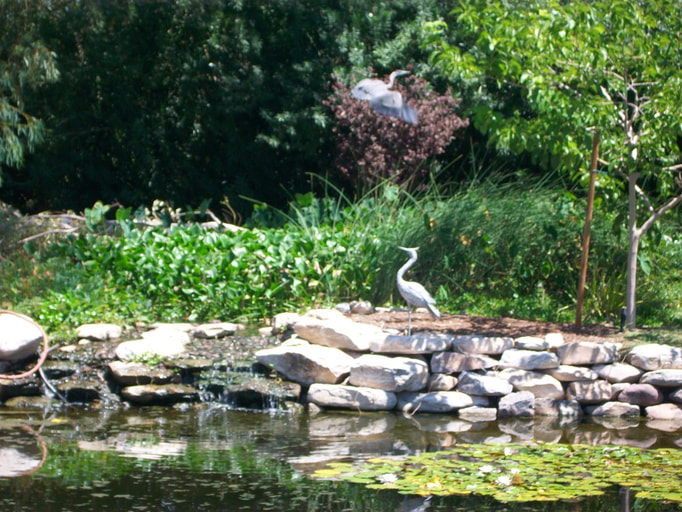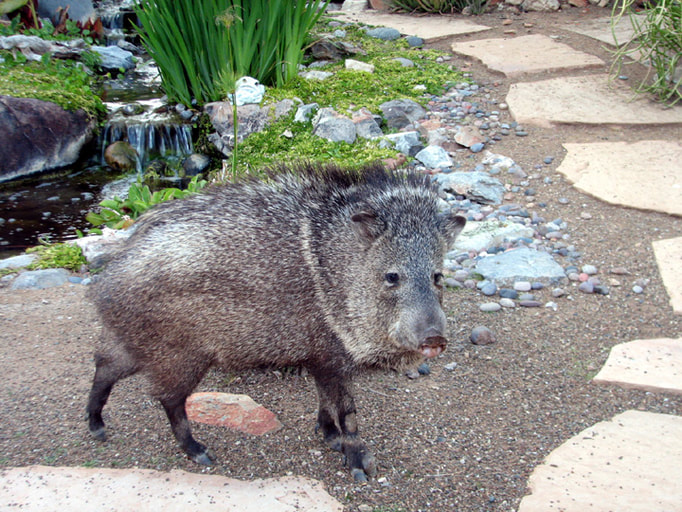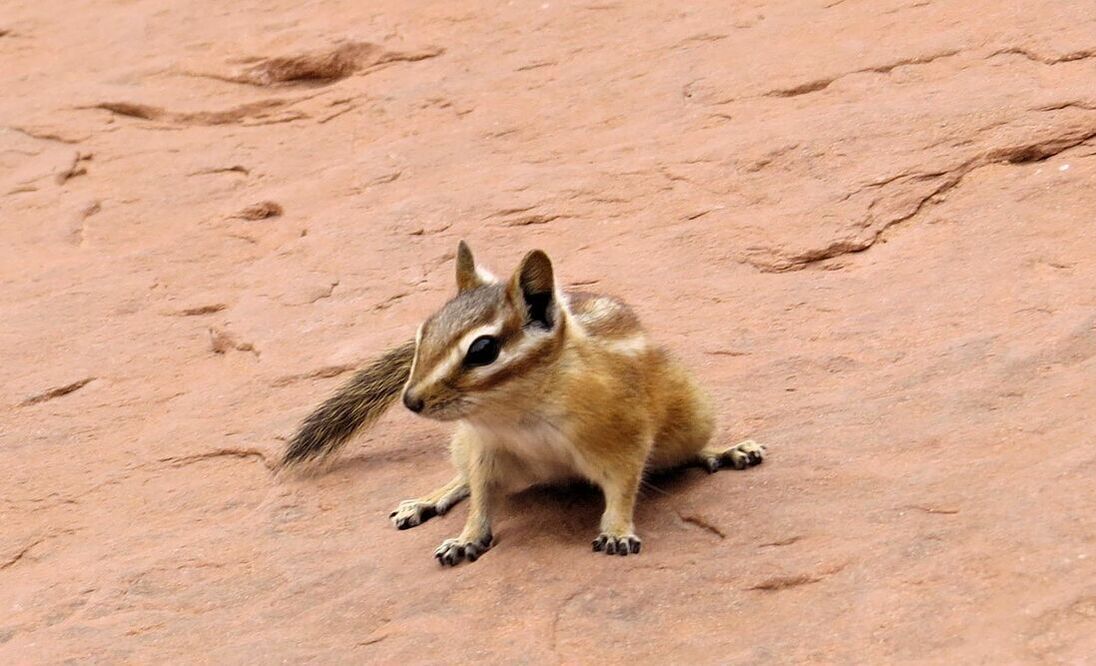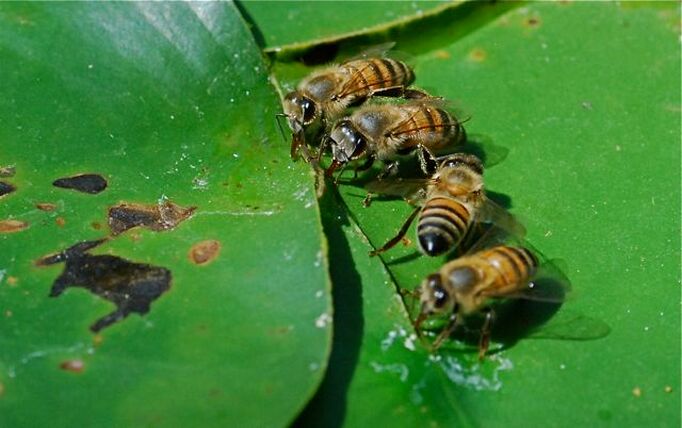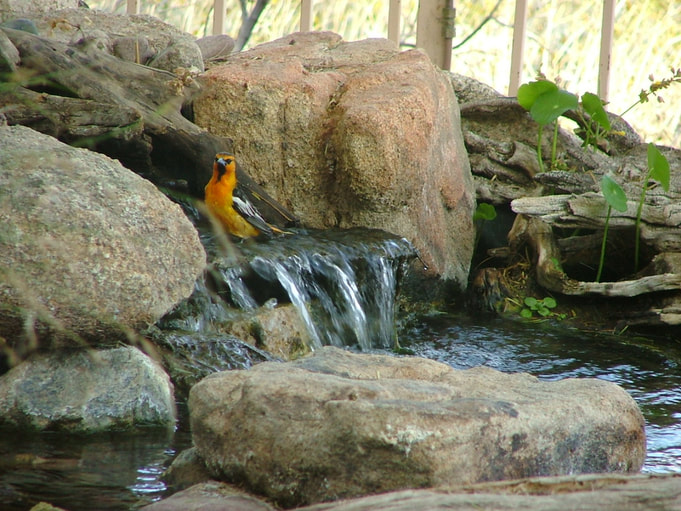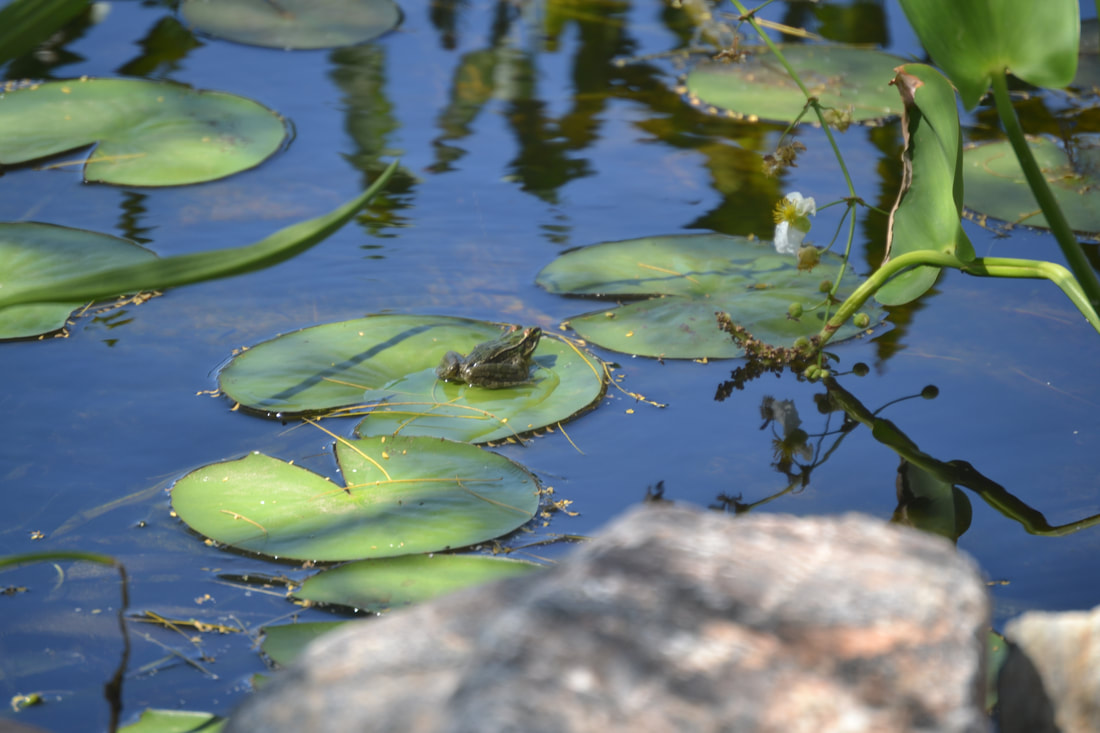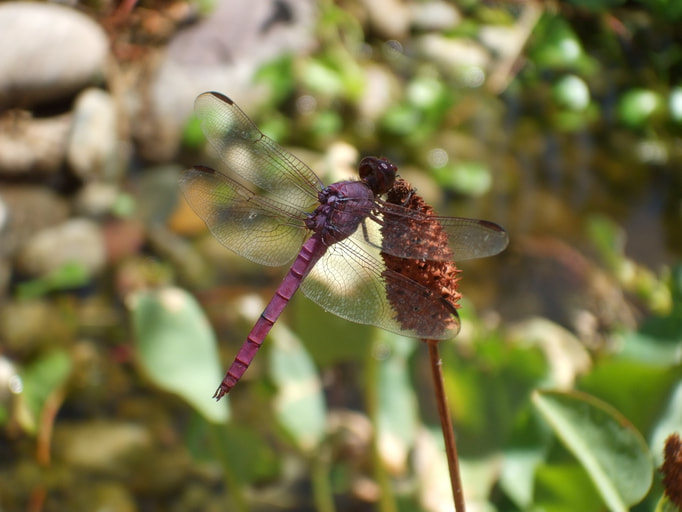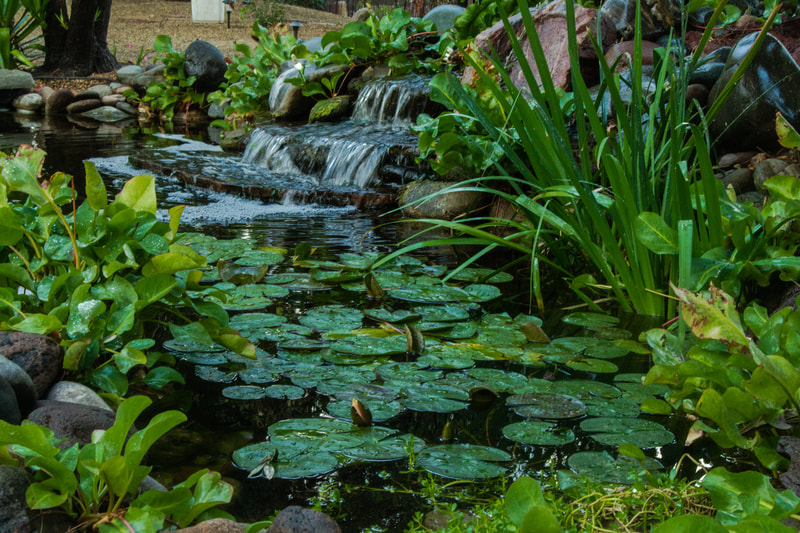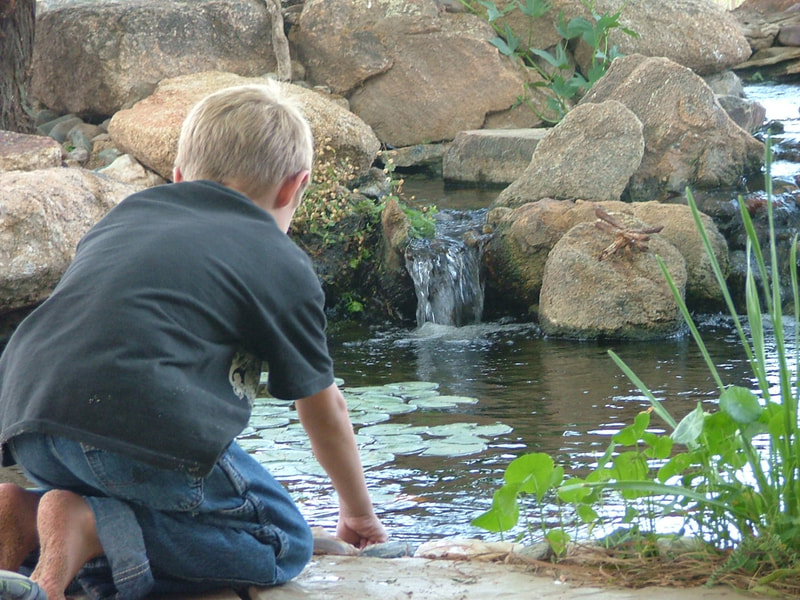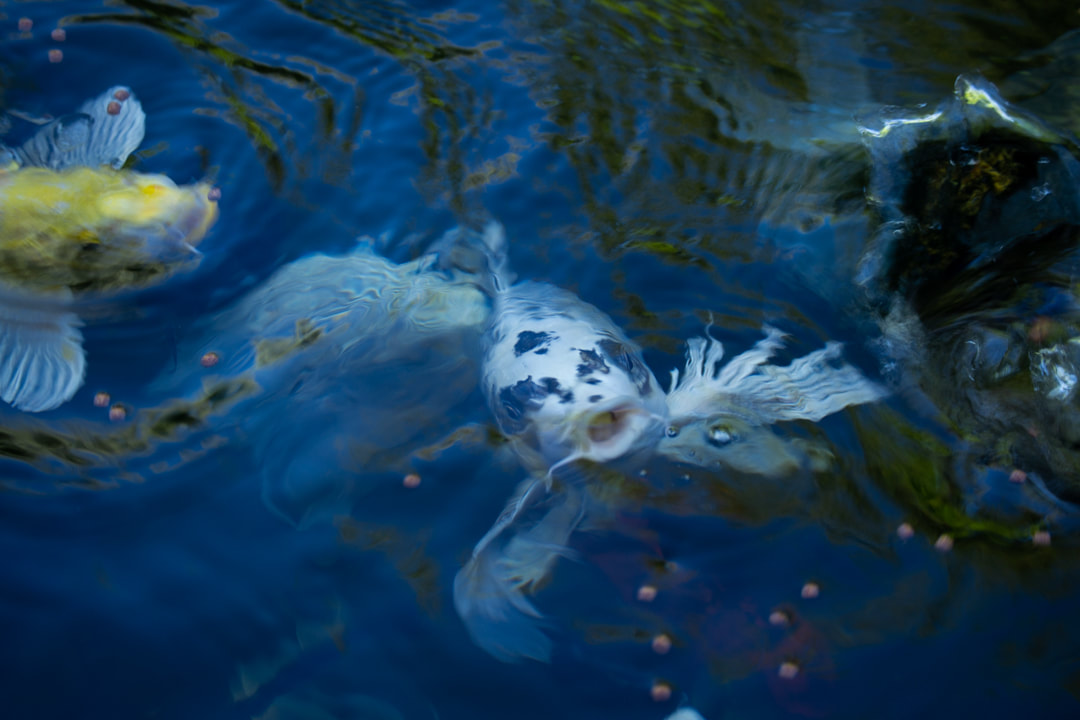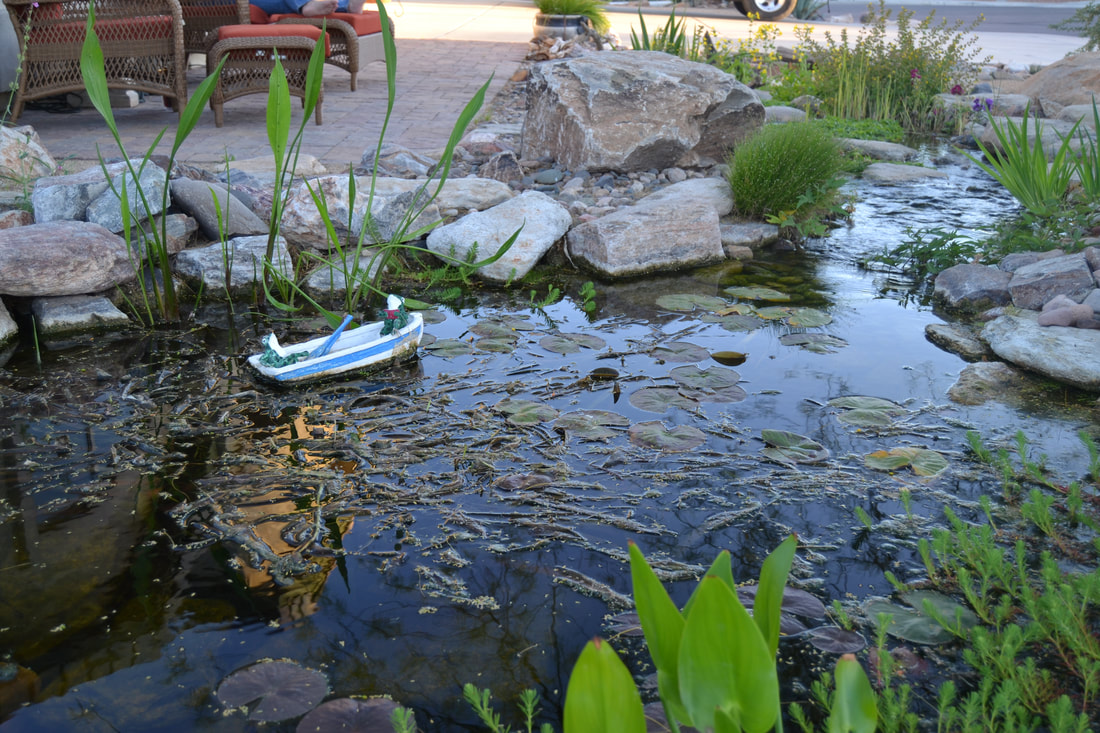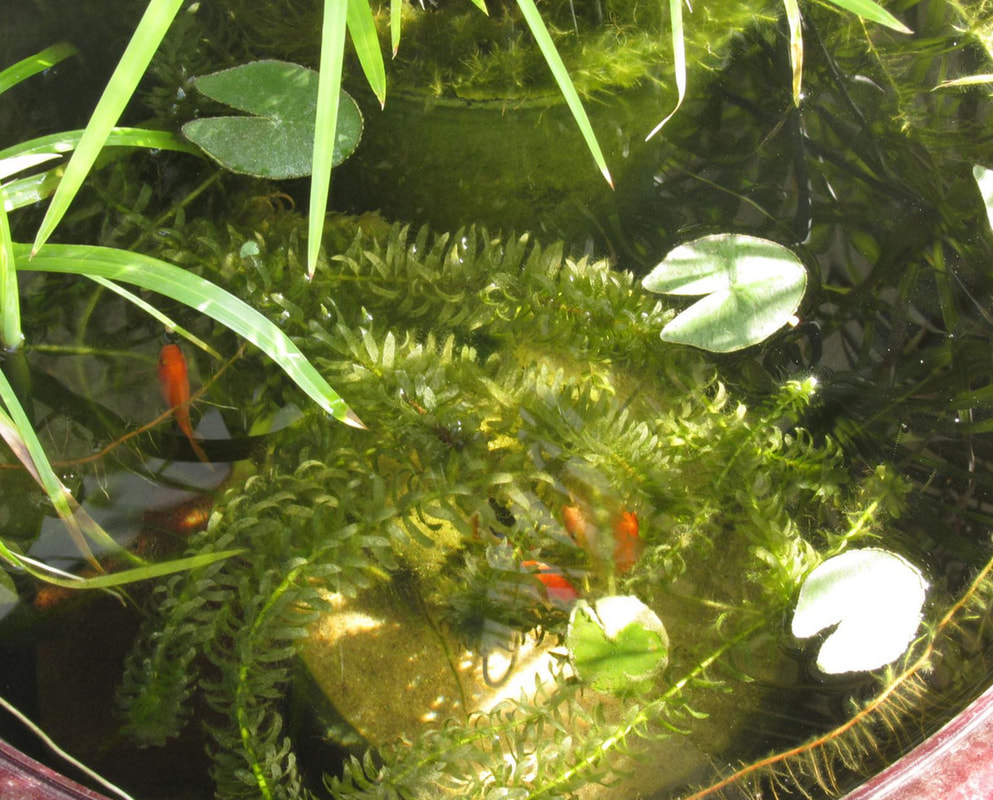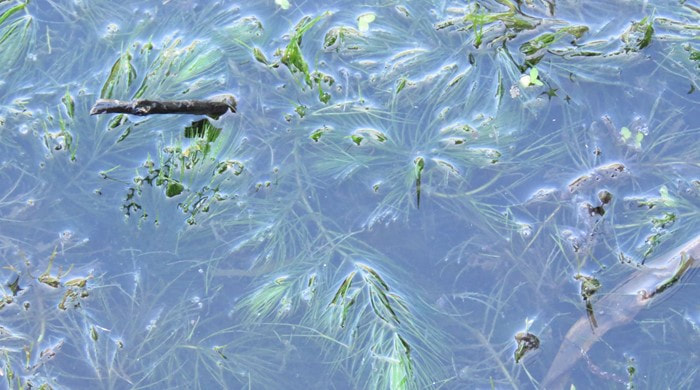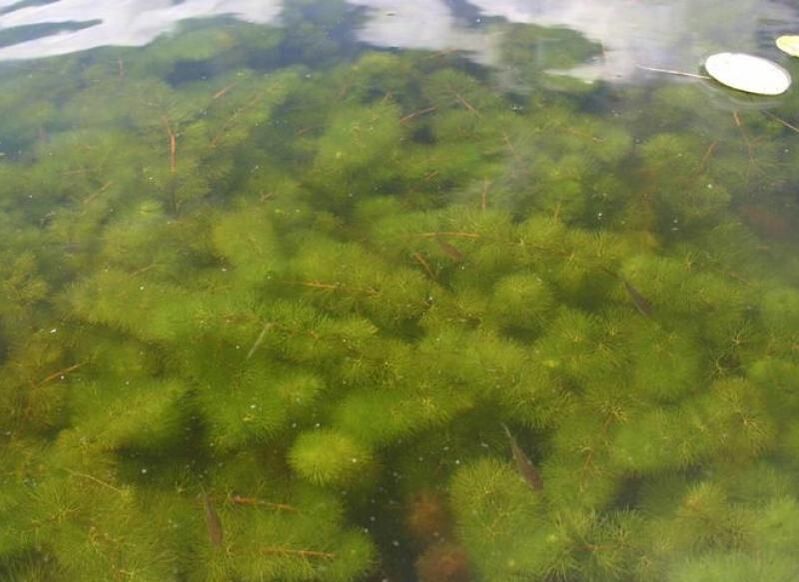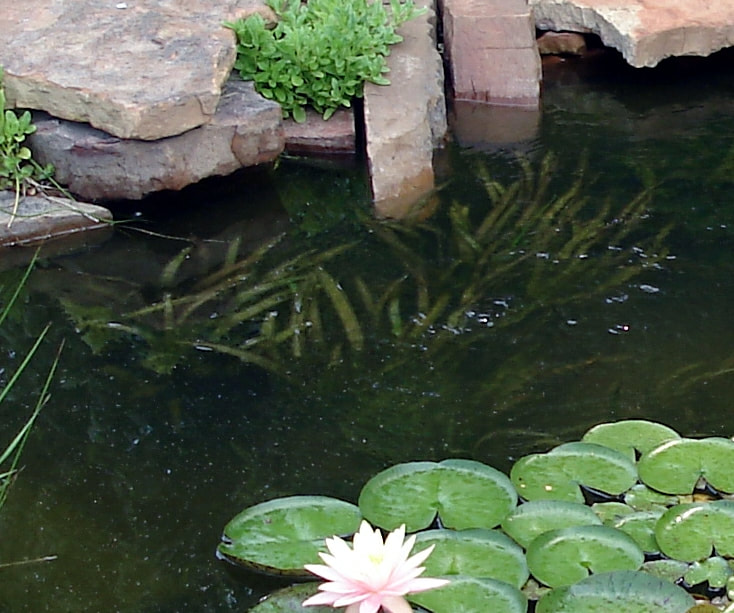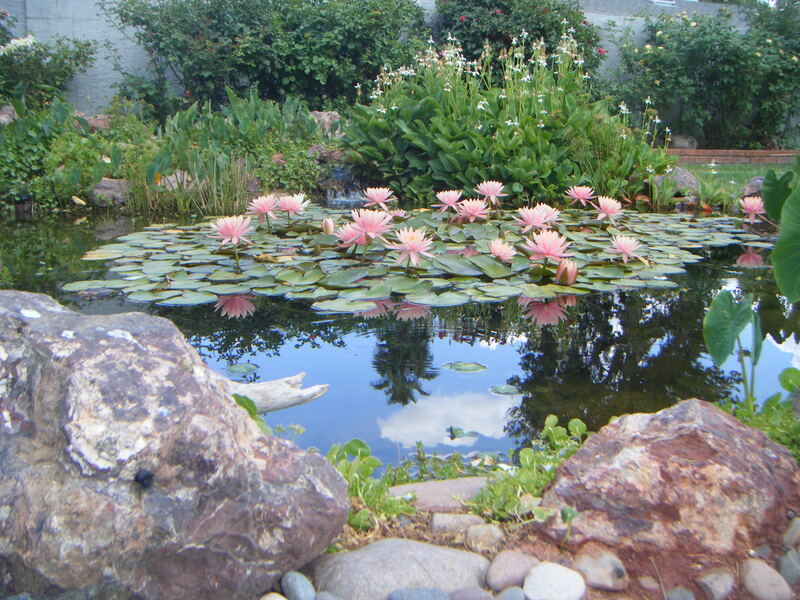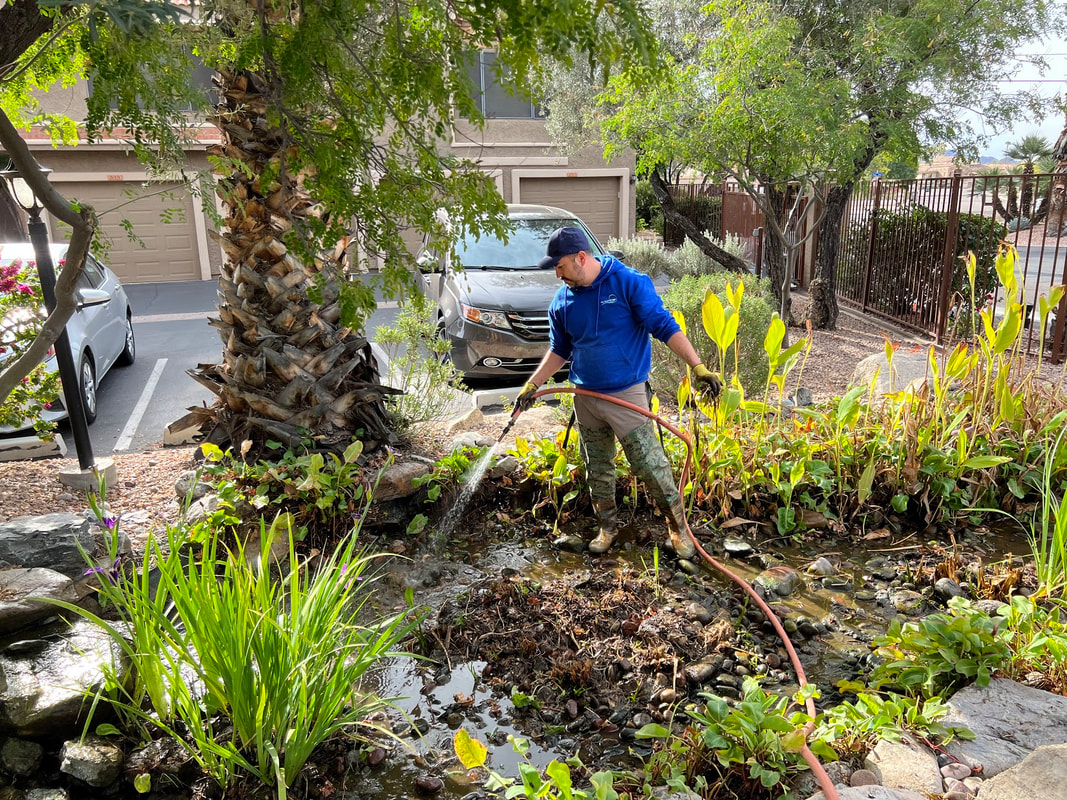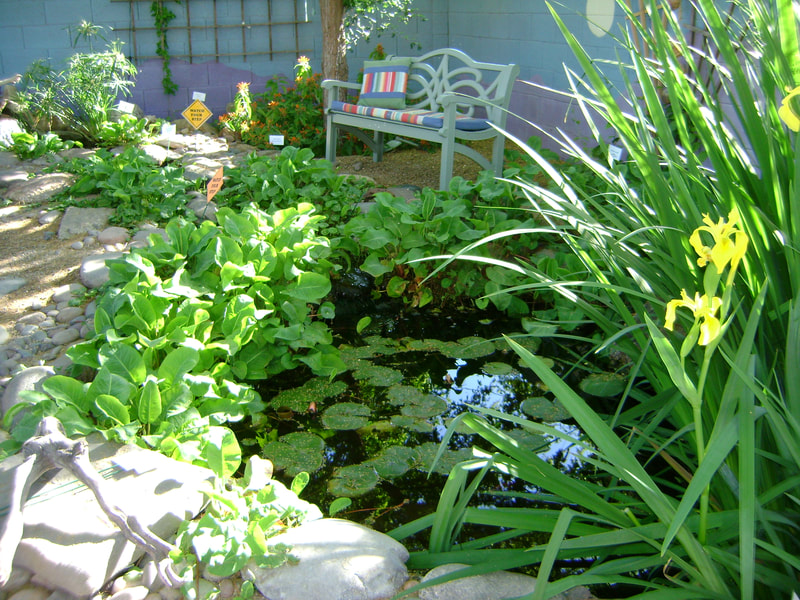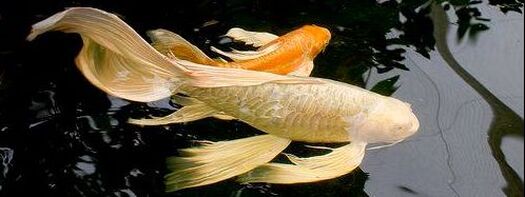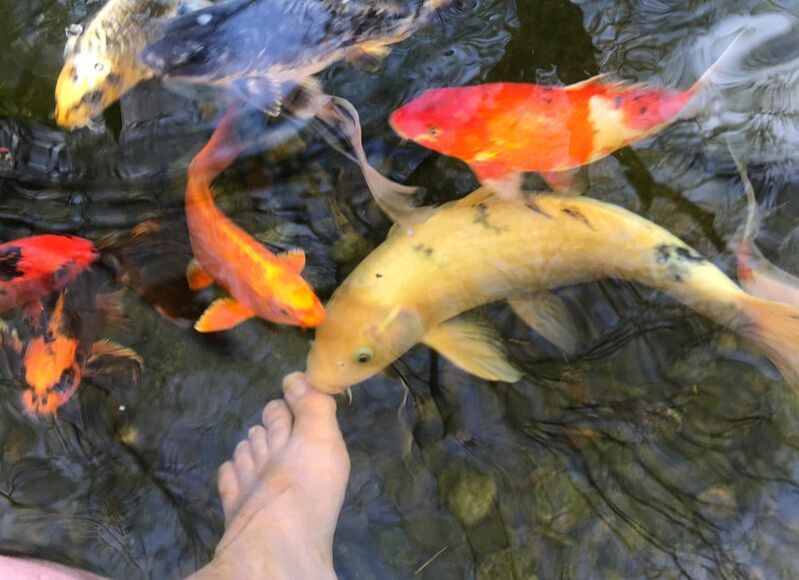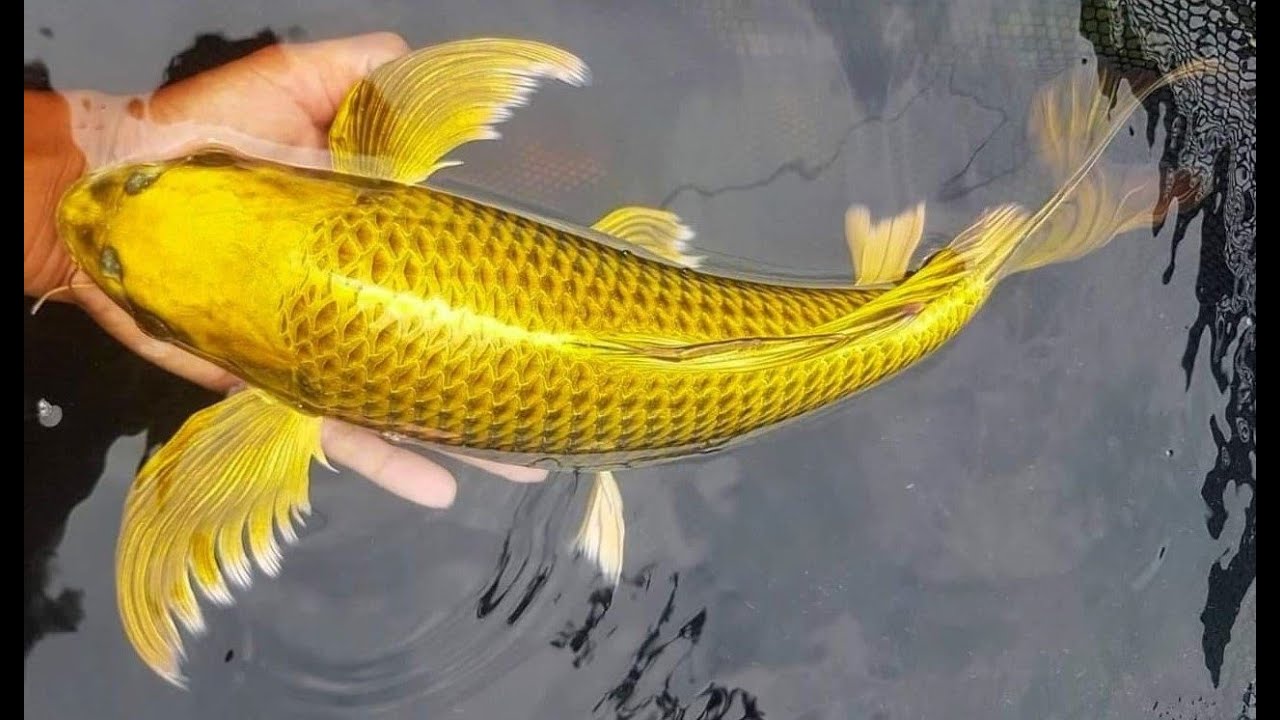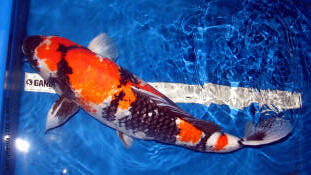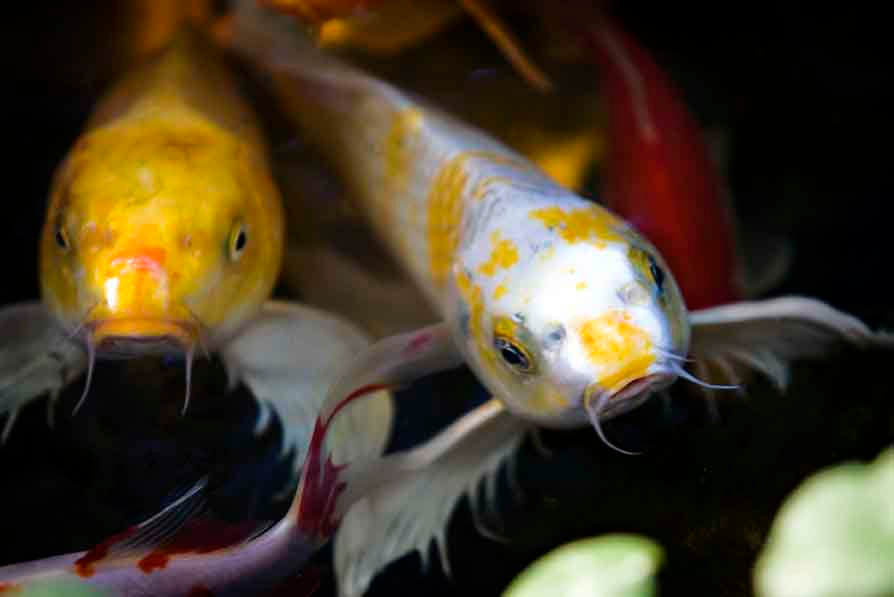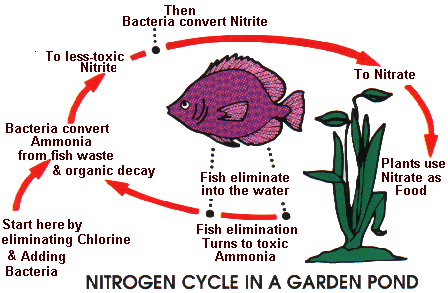Guarding Your Arizona Backyard Oasis - A Guide to Defending Ponds Against Raccoon Intruders2/1/2024
Yes, we have raccoons in Phoenix, AZ! Arizona's backyard ponds serve as tranquil havens, providing homeowners with a slice of nature within their property. However, maintaining these water features comes with its challenges, especially when raccoons decide to make your pond their nightly playground. Raccoons can wreak havoc on ponds, causing damage to aquatic plant life and disrupting the aesthetics of your backyard paradise. In this blog, we'll explore effective strategies to defend your Arizona backyard pond from raccoon intruders, while preserving the harmonious coexistence between your water feature and local wildlife. Understanding the ThreatRaccoons are intelligent and resourceful creatures, known for their curiosity and dexterity (some people call them cats with hands). When they discover a pond, they view it as a potential food source and an opportunity for play. The potential damage caused by raccoons includes uprooting plants, disturbing the pond substrate, and even predation on fish and other aquatic life. They can be quite destructive, especially if your pond is hosting an entire gaze of raccoons (yes, you read that right: a group of raccoons is referred to as a “gaze”). Now you know. Implementing RACCOON Defense StrategiesPhysical Barriers The most effective direct barrier for raccoons is an electric barrier fence. Ranch supply stores, like Tractor Supply, sell very affordable electric barrier fencing options. The obvious drawback is that this type of fencing will also limit your pet’s ability to access the pond. Since raccoons are nocturnal predators, the answer to that issue is to put a timer on the fencing transformer so that it is only active between bedtime and dawn. And then remember the times when you can let your dog out without mishap. Motion-Activated Devices You could install motion-activated sprinklers or lights (sometimes called “Scarecrows”). Raccoons are nocturnal, and sudden bursts of water, light, or sound can startle and deter them. These devices are an effective way to discourage raccoons from approaching your pond. If you opt for water, be sure to deactivate it before you go out, or you’re gonna get an unexpected shower. The funniest noise option story I’ve heard is using a motion-activated power source to activate an electric drill with a bent bit inside of an old metal mailbox. The racket will scare the hair off the raccoon and if it happens to wake you that makes for a good chuckle before you fall back to sleep and dream about your koi greeting you from their safe haven in the morning! Floating Deterrents Place floating objects like large plastic balls or inflated pool toys in your pond. Raccoons are less likely to enter water where these objects are present, as they can be unpredictable and uncomfortable for the animals. Natural Deterrents Use predator decoys or scents. Strategically place decoys of natural predators, like owls or hawks, around the pond. Additionally, you can use predator urine or scents to create the illusion of danger, making raccoons think twice before approaching. An actual patrol dog is another obvious choice. Secure Feeding Practices Refrain from feeding other local wildlife near the pond, as this may attract raccoons looking for an easy meal. Remove any potential food sources, such as fallen fruit or pet food, that might entice them onto your property. Strategic Landscaping and Regular Maintenance Keep surrounding vegetation trimmed to eliminate potential hiding spots for raccoons. This also ensures clear lines of sight, making your pond less appealing as a shelter. Professional Pest Management If you have an ongoing raccoon issue, you can contact a pest control company properly licensed to capture and relocate these critters. One good choice would be Arizona Wildlife Control. Defending your Arizona backyard pond against raccoons requires a combination of preventive measures and thoughtful landscaping. By implementing physical barriers, motion-activated devices, floating deterrents, and/or natural deterrents, and maintaining secure feeding practices, you can coexist peacefully with local wildlife while preserving the beauty of your pond. With these strategies in place, you can enjoy the serenity of your backyard oasis without the fear of raccoon disturbances. OTHER POSTS YOU MIGHT ENJOY: Build it and they will come! Everything needs water to survive, and if you have a living backyard pond in Phoenix, you can count on visitors. Some of these will delight the eye; others may not be so welcome. An organic, healthy water source is a boon for local wildlife, as well as native & migratory birds. But everything in life is a package deal, especially when it comes to backyard landscape ideas. The possibility of pond predators seeking out your backyard pond is a valid concern in terms of the safety of your pond's inhabitants and your family, but the possibility shouldn't be a reason to avoid having a backyard pond, and a little common sense goes a long way. We've listed here a few visitors that you might encounter. RACCOONS ARE PREDATORSYes, we have raccoons in Phoenix. Raccoons generally won't actually swim in your pond. That's not to say they couldn't stand on the side of your pond and take a swipe at your fish. Fortunately, most fish will swim to a deeper, more protected part of the pond when a predator is threatening them. We had a raccoon visit with us for a short time. Yep, ate our favorite fish. There are pest control companies that can help you with these guys. And there are several deterrents that can be employed to discourage them from coming near your pond. BLUE HERONS ARE HUNGRY BIRDSThe one predator with legitimate credentials to raid your backyard pond is the Blue Heron. These birds can easily wade into your pond, help themselves to any fish of their choice, and fly away with their bellies full. They are a protected species, so don’t get any crazy ideas about getting out your BB gun. Giving your fish a place to hide in your backyard pond (adding Koi caves) dramatically increases their odds of survival, and/or a motion-sensing sprinkler can be set up alongside your pond ready to fire a steady stream of water at a predator has had some degree of success in warding off these curious critters. Just remember to turn the darn thing off before YOU go outside, or be prepared to get an unexpected shower. COYOTES ARE A BIT WEIRDCoyotes really just want a drink of water. Although, as you can see from the photo below, sometimes they like to bathe or lay in a shallow stream to cool off. They've also been known to take a poop in a stream, which we find to be a bizarre behavior. If you have coyotes in your neighborhood, take a quick peak out a window before you go charging out the door, just to be on the safe side, or before you let your little pooch outside. JAVELINA CAN BE DANGEROUSAgain, Javelina are just stopping by for a drink. They're not interested in your fish. However, they can be dangerous, especially if they have young with them. Always check your surroundings before venturing out of the house. RODENTS CAN BE SERIOUS PESTSIf you live in an area where rodents are prevalent, you will probably attract some to your backyard pond. They can be real pests, as they tend to dig. Rodents will make homes in the back of waterfalls and can wreak all sorts of damage if not caught early. And with rodents come the predators of rodents. Reptiles are generally a retiring bunch, and don’t want anything more to do with humans than humans want to do with them. THE BEES' KNEESNow that we’ve scared the wits out of you, let’s talk about some terrific beneficial creatures that will be attracted to your organic water feature. We’ll start by talking about bees. Yes, bees are friendlies! They are after the water. These girls are very busy collecting it to take back to the hive to keep the rest of the hive alive, especially during the hot summer months. Bees are a “collective,” meaning that they each (as drones) are programmed to do a specific job for the “collective,” and no more. The only way they sting is in confusion or self-defense. So, don't interrupt their day. NATIVE & MIGRATORY BIRDS ARE FUN TO WATCHBirds are probably the prominent creatures that you will notice around your backyard pond. Want to see Orioles, Cardinals, Warblers, Cactus Wren, etc., right outside your living room window? A pond gives them a healthy, organic water source, whether they’re there to stay, or just making a pit stop along the way to their destination, making this backyard landscape idea a favorite of bird lovers. OTHER COOL CRITTERSFrogs, toads, butterflies, dragonflies, and damselflies are other awesome critters that are attracted to backyard ponds. Not only are they great fun to observe, but they provide the best possible integrated pest management you can imagine! Other cute critters you might spy around your pond would be families of quail, bunnies, and lizards. Whether they’re pets or friendlies is, like beauty, in the eye of the beholder. OTHER POSTS YOU MIGHT ENJOY:Also known as oxygenators, submerged pond plants live entirely underwater – well, almost. They do flower and the flowers will rise to the surface of the pond for pollination. However, most of these flowers are insignificant and don’t constitute a compelling reason to purchase the plants. Submerged pond plants act as a wonderful natural filter in your pond, consuming excess nutrients. Here are some great reasons why you need submerged plants in your pond. Algae FightersFor the most part, submerged plants take their nutrients directly from the water, which means they compete with algae for their dinner. Algae is nothing more than a single-celled, green aquatic plant (the first weed in the garden, we like to say). Being bigger, more voracious, and better-looking than algae, submerged pond plants usually end up with most of the food, thereby starving the algae out (like a healthy vegetable garden or a healthy lawn). So, if algae control is at the top of your list for maintaining your pond, you’ll want to add a few oxygenators to the water garden. Fish ProtectionAnother great function that submerged aquatic plants serves is providing areas for fish to spawn and baby fish (fry) to hide. Purchasing (or adopting) and PlantingWhen purchasing submerged plants, you’ll find they are usually sold in bunches of stem cuttings and are available weighted or unweighted. Weighted bunches have a weight tied to the bunch that helps keep the plant in place at the bottom of the pond. If you’re unable to find weighted plants, simply tuck their ends under a rock to keep them from traveling and floating into your skimmer (or being plucked up by your Koi). Weighted bunches can be tossed into your pond. Unweighted plants can be planted in an aquatic plant pot with gravel, sand, or potting media. If you have a rock substrate, you can easily plant them directly into the pond. Most submerged pond plants prefer water that is 24” to 36” deep, except for hornwort which floats near the surface of the water. Adopting pond plants from other people’s ponds carries a few caveats, and we have a separate blog on that subject. Types of Submerged Pond PlantsJust like with marginals and waterlilies, some pond owners have their favorite submerged plants. Here are four of the more popular varieties that are all native to North America. Anacharis – Egeria densa Anacharis is the most popular of the submerged plants. It grows rooted in pond substrate or potted in sand or pond plant media. It has tiny white flowers that develop on the surface of the water in the summer. Each stem has short, thin leaves whorled around it, like a bottle brush, and can grow up to six feet in length. Hardy in Zones 5-11. Hornwort – Ceratophyllum demersum Hornwort grows as a dense, rootless mass that floats below the surface of the pond. It has very small white flowers in the summer that often look like pollen floating on the surface. Keep these wanderers in place by weighting them with a rock. Hardy in Zones 5-11. Cabomba – Cabomba caroliniana Cabomba lays completely flat when growing out of the water but produces a beautiful fan when submerged under water. The tops of the finely cut leaves are dark green and the underside is dark red. Cabomba bears small white flowers in summer. The fronds of cabomba are softer than hornwort, and therefore, more agreeable to pond fish. Hardy in Zones 5-11. Eel Grass – Vallisneria americana Eel grass has long, eel-like leaves that grow from a rooted runner planted in the pond substrate or in a pot with pond plant media. It grows 24 to 36 inches long and forms a thick mat across the bottom of the pond. There are many varieties of eel grass, each with different growing habits such as a corkscrew form and some that have red foliage. Hardy in Zones 4-11. OTHER POSTS YOU MIGHT ENJOY: Many people believe that their pond must be power washed in order to be appropriately “cleaned.” This may very well apply to non-living water features. However, here at The Pond Gnome, we have three primary reasons for not wanting to perform this commonly-requested service on ecosystem ponds and water features.
Basically, power washing an ecosystem pond or water feature will be worse than sending it back to the genesis period before there was a lot of life and nutrients within the feature. OTHER POSTS YOU MIGHT ENJOY: You may have wondered if your pond fish sleep, or whether they have teeth. You might also contemplate why fish smell or how much koi cost. We've answered a few questions in this blog about koi: weird stuff you may have never pondered before, or maybe you have... Do koi have teeth?Koi encounter a lot of crunchy stuff as they sift through the mud and gravel on the bottom of a pond. An examination of the contents of the stomachs of wild carp reveals a mixture of plant and animal material, particularly crushed crayfish, snails, and worms. For this, koi need teeth to break up the food. They do indeed have rather large teeth located at the back of the throat behind their gill arches. The teeth are so far back that it would be difficult to reach, even if you stuck your finger in the mouth of a large koi. They don’t use their teeth aggressively or defensively, so you’re safe teaching them how to eat from your hand. Their teeth are used to smash the food items against a boney palate on the upper surface of the throat area. The teeth of koi come in three pairs, and they constantly develop and shed the crowns. You might be surprised to find these white, calcium rich crowns in the skimmer of your pond! The koi teeth look much like the molars of mammals such as cows and people. Do pond fish sleep?Fish do sleep, but not in the same manner as humans. Fish don’t have eyelids, so they can’t close their eyes. Instead, fish catch periods of rest by floating in one place or nestling into a cozy spot at the bottom of your pond. If you watch your fish quite a bit, you might have noticed this behavior from time to time. How can I tell if my koi are stressed?Koi show stress by blushing red in their fins and on their bodies. This is caused by a stressful environment, such as poor water quality. It’s their way of showing you that something is wrong. Why do fish smell?Fish smell strongly because of amino acids in their secretions and tissues, which is rich in sulfur and very unstable once the fish dies. The amino acids break down quickly into volatile amines like ethylamine, which conveys a strong odor. When you get fish slime on your hands, it begins to decay almost immediately. That’s when you smell ethylamine. Your nose is keen to pick up these unpleasant amines and it typically means that something is spoiled and unfit to eat. How many times can pond fish reproduce?Koi and goldfish can reproduce twice in one year. Normally, a koi or goldfish spawns once per year, but there are situations where koi or goldfish may spawn in the spring and then again in the fall if the temperature is unseasonably warm. Goldfish are more likely than koi to have two spawns per year. How expensive are koi?In rare instances, some koi have sold for over one million dollars! Many show koi are sold for five figures. A koi’s value is related to the rarity of its pattern, and this is determined by the intensity of its colors and the pattern in which those colors occur. The rarer the fish’s finery, the more the fish is worth. Ultimately, a koi is only worth what someone is willing to pay for it. Are fish diseases contagious to humans?There are a few diseases of pond fish which can be transmitted to a human who has an open wound exposed to the water. Various bacteria from koi are also infectious to humans and can be contracted via open wounds. So, the moral of the story is to keep any open wounds clear of the pond water. Is the correct term for a pregnant goldfish “twit”?The answer is yes! Over the last 40 years, in Australia and sometimes England, one common reference word for a gravid female goldfish has been some variant of the term “twit” or “twerp.” The proper term for a pregnant female fish is “gravid” with “twit” being the slang version. If you keep koi or goldfish in the dark, will they eventually turn white?A lot of young goldfish that start out orange or red will naturally turn white, even if kept in full sun. An example of this is the red cap oranda, which almost always turns pure white. Some fish will lose all their red, simply due to significant stress. Any fish kept away from full sunlight, will become paler in color. “A red fish will usually turn orange or even a brassy yellow without sunlight,” Fish expert Doc Johnson says. “Kept in the dark, the effect would be more significant. However, the fish would not turn white just because it was kept in the dark.” Do goldfish really have a three-second memory?Despite this popular belief, most studies have found the concept of fish having a three-second memory to be a myth. On the contrary, their memories can last as long as three months! Veterinarian Dr. Richmond Loh used levers to train goldfish how to get food, and they remembered these lessons for several months without reinforcement. There is also a man who trains a goldfish to do various tricks. Although they are easy and quick to train, the fish do not remember their routine for very long. Because they can only be trained when hungry, most training sessions are about 15 minutes long, up to twice per day. The talented goldfish wouldn’t remember the order of its routine from day to day, but when rewarded for certain behaviors, it could be trained to put on a 15-minute show with little more than finger cues and food as a reward. Other beliefs about koiThere are a few other beliefs about koi that are not scientifically proven to be true but would appear to hold merit based on the frequency of occurrence. For example, the more a fish costs, the more likely it is to become sick and possibly die, no matter how well you care for it. Of course, this is probably just Murphy’s Law. And then there’s the old tale that naming your fish will surely increase its odds of developing an illness or becoming prey to predators. It’s quite common to hear a pond owner warn against naming koi. They’ll be able to back up that claim with story after story. At the end of the day, pond fish are a joy to keep. And like anything else, the more you become familiar with fish care, the more you’ll succeed. For more information on Koi, check out Doctor Eric Johnson on other interesting questions about koi and goldfish. You might be surprised to find what you learn! OTHER POSTS YOU MIGHT ENJOY: |
The Pond Gnome offers Pond Design, Pond Construction, Pond Maintenance, Pond Remodeling, Pond Replacement, and Pond Cleaning Services for the Greater Phoenix Metropolitan area, including the cities of Phoenix, Scottsdale, Paradise Valley, Carefree, Cave Creek, Glendale, Peoria, Sun City, and other surrounding communities.
Our Services |
Company |
|
